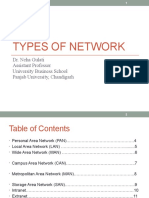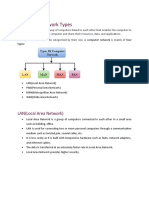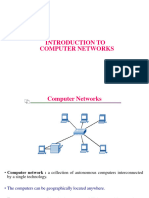0% found this document useful (0 votes)
12 views32 pagesNET200 - Chapter 3
Chapter 3 discusses various types of network hardware and communication technologies, including broadcast and point-to-point links, as well as different network types such as PAN, LAN, MAN, and WAN. It also covers internetworking concepts like intranets and extranets, along with the functionality and advantages of Virtual Private Networks (VPNs). Additionally, the chapter details networking devices like routers, switches, and repeaters, explaining their roles in data transmission and network management.
Uploaded by
mberengakelvin0Copyright
© © All Rights Reserved
We take content rights seriously. If you suspect this is your content, claim it here.
Available Formats
Download as PDF, TXT or read online on Scribd
0% found this document useful (0 votes)
12 views32 pagesNET200 - Chapter 3
Chapter 3 discusses various types of network hardware and communication technologies, including broadcast and point-to-point links, as well as different network types such as PAN, LAN, MAN, and WAN. It also covers internetworking concepts like intranets and extranets, along with the functionality and advantages of Virtual Private Networks (VPNs). Additionally, the chapter details networking devices like routers, switches, and repeaters, explaining their roles in data transmission and network management.
Uploaded by
mberengakelvin0Copyright
© © All Rights Reserved
We take content rights seriously. If you suspect this is your content, claim it here.
Available Formats
Download as PDF, TXT or read online on Scribd
/ 32












































































































